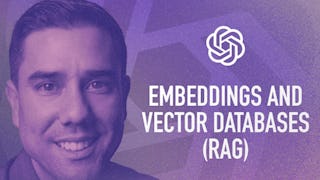In this course, you will explore two techniques to improve the performance of a foundation model (FM): Retrieval Augmented Generation (RAG) and fine-tuning. You will learn about Amazon Web Services (AWS) services that help store embeddings with vector databases, the role of agents in multi-step tasks, define methods for fine-tuning an FM, how to prepare data for fine-tuning, and more.


Optimizing Foundation Models

Instructor: AWS Instructor
Access provided by Model Institute of Engineering and Technology
What you'll learn
Identify AWS services that help store embeddings with vector databases.
Understand the role of agents in multi-step tasks.
Understand approaches to evaluate FM performance and determine whether an FM effectively meets business objectives.
Skills you'll gain
Details to know
1 assignment
October 2025
See how employees at top companies are mastering in-demand skills

There is 1 module in this course
In this course, you will explore two techniques to improve the performance of a foundation model (FM): Retrieval Augmented Generation (RAG) and fine-tuning. You will learn about Amazon Web Services (AWS) services that help store embeddings with vector databases, the role of agents in multi-step tasks, define methods for fine-tuning an FM, how to prepare data for fine-tuning, and more.
What's included
1 reading1 assignment
Instructor

Offered by
Why people choose Coursera for their career







